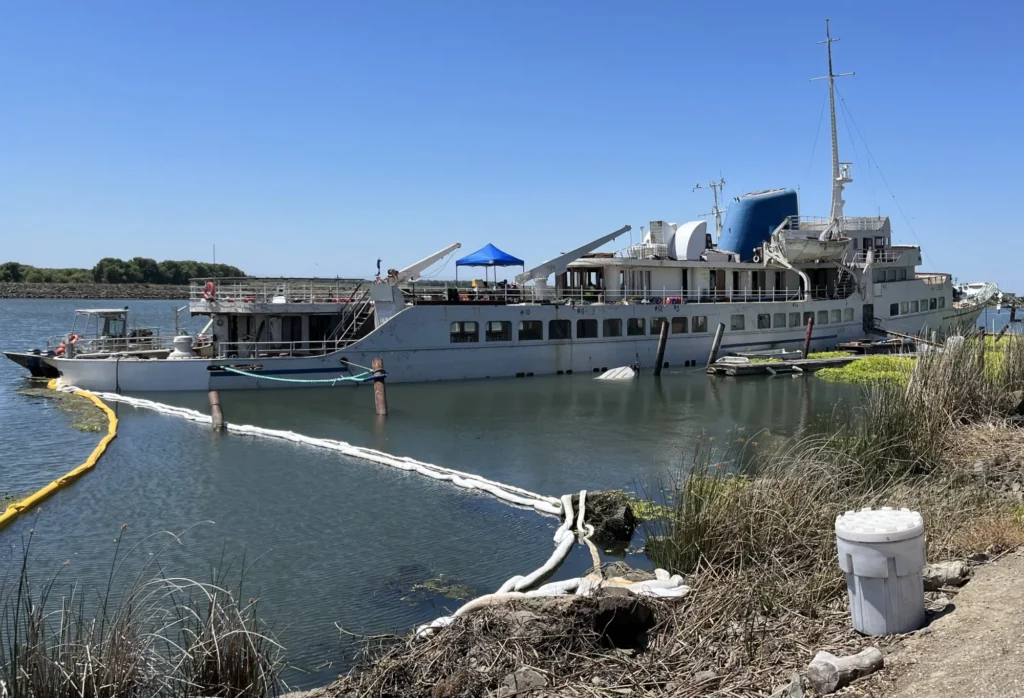When the vintage cruise ship called the Aurora sank into the Delta waters just outside Stockton, it was one of the most popular stories of the year for Stocktonia, a NEWSWELL newsroom.
It was also a big public hazard. The ship had leaked oil into the water just upstream from Stockton’s municipal drinking-water intake. It was unclear who — if anyone — owned the Aurora, and who was ultimately going to be held responsible. So any story about this ship was clearly in the public interest.

People wanted to see the ship, but the city was running a 24-hour-a-day roadblock keeping most of them far away. Whether you were concerned about wildlife or drinking water — or just curious — you couldn’t see the ship, see its condition, or decide for yourself how big of a problem it might be. (That is, unless you had enough money to access a private duck-hunting club on an island in the Delta. As is so often the case, the very wealthy gained access the rest of the public did not.)
To cover this story, we assembled a team in Stockton: an expert from ASU’s program on Narrative and Emerging Media who develops 3D visuals using artificial intelligence technology. A professor from the Cronkite journalism school who is also a master photographer and pilot. Editors, writers and photographers who knew the territory and the story. They all joined me at Stocktonia for the project.
Our task: Fly a drone — legally, in federally regulated airspace — above the city-managed roadblock. Gather hours of high-definition footage in a special series of angles and exposures. Then, use the power of AI in a new system called Gaussian splatting. With AI, we could rapidly reconstruct that imagery, and fill in the gaps beyond what the camera could capture.
Over two days in October 2024, the team flew a drone to capture images for the AI-driven calculations. Watch the behind the seasons video below.
Our interactive presentation brought the ship to life, up-close, for people who weren’t allowed to see it for themselves.
It was one of the most innovative projects Stocktonia had ever published.
But as we showed this new tool to people, it became clear we were doing more than just showing something. Our newsroom was putting people in control. In a world where too many people have been conditioned not to trust the media, or not to believe what they see, we were letting them drive. Readers could see the story on their own terms.
Our work didn’t just resonate locally. It’s being noticed nationally.
The Institute for Nonprofit News has named Stocktonia’s VR report a finalist for the Insight Award for Explanatory Journalism in the 2025 Nonprofit News Awards. Judges called the reporting “super quirky and cool.” We think so too. This project is a model for how innovation from teams like the one at NEWSWELL can increase access and expand what’s possible.
The ship is gone now, but you can still see it in our project.
This kind of innovation doesn’t happen by accident. It happens because people like you believe the public deserves to see the full story — no matter who’s trying to block the view.
This update originally appeared in our Aug. 8, 2025, newsletter, which came from Josh Susong, NEWSWELL director of investigative journalism ventures. This version has been lightly edited for clarity.